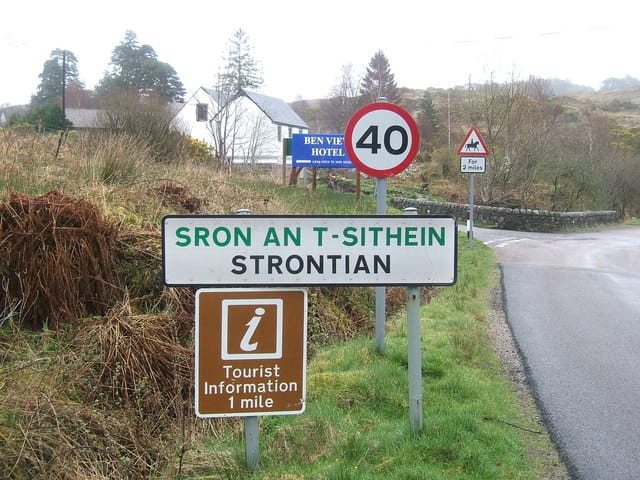strontium

Strontium is a chemical element with atomic number 38 and the symbol Sr. It is a highly reactive, soft, silver-white/yellowish metal. The isotopes found in strontium ores are all stable, but nuclear fission produces radioactive ones, including strontium-90, which has a half-life of 28.9 years. Strontium-90 is a product of reactor accidents and nuclear weapons and can cause bone cancer (due to strontium’s ability to replace calcium in bones) and leukemia.
Strontium was heavily used in producing the glass for cathode-ray tubes (CRTs) used in televisions and computer monitors because it blocked X-rays, but with the switch to liquid-crystal display (LCD) devices, this use has fallen away. Strontium aluminate is used in glow-in-the-dark toys; strontium carbonate is used in fireworks, giving them a deep-red color; and strontium carbonate is used in some toothpastes. The shorter-lived radioactive isotopes have applications in nuclear medicine.
The element is named for Strontian, the Scottish village where the mineral was first discovered in the local lead mines. The Gaelic name, sron an t-sithein, translates as nose of the fairies. Chemist and physician Adair Crawford was the first to identify the mineral and posit that it was a distinct element, but he didn’t give it a name, referring to it as the Strontean mineral or the Scotch mineral:
The salt which is obtained from the combination of the Strontean mineral with muriatic acid, is much more soluble in hot water than in cold, and therefore easily chrystallizes by cooling.
And
It is probable, indeed, that the Scotch mineral is a new species of earth which has not hitherto been sufficiently examined.
The first to give the mineral a name were physicians Friedrich Gabriel Sulzer and Johann Friedrich Blumenbach in 1791, calling it strontianite. That name is still used to refer to the raw mineral ore:
Ich habe dieses interessante Fossil, das eine eigne Grunderde zu enthalten scheint einstweilen in meiner fleinen Sammlung Strontianit getauft, und werde, was ich noch davon habe, zu fernen Bersuchen aufopfern.
(I have, for the time being, christened this interesting fossil in my small collection, which seems to contain its own basic earth, strontianite and will donate what I still have of it for future research.)
(Blumenbach is perhaps more famous for being one the founders of now thoroughly discredited “race science.” And his five racial categories survive today in those used by the U.S. Census Bureau.)
Chemist Humphry Davy was the first to isolate the element some two decades latter using the then-new process of electrolysis. In 1808 Davy successfully isolated and named four alkaline earths, barium, calcium, magnesium, and strontium, adding the -ium ending to the root of the Scottish name:
These new substances will demand names; and on the same principles as I have named the bases of the fixed alkalies, potassium and sodium, I shall venture to denominate the metals from the alkaline earths barium, strontium, calcium, and magnium; the last of these words is undoubtedly objectionable, but magnesium has been already applied to metallic manganese, and would consequently have been an equivocal term.
Sources:
Crawford, Adair. “On the Medicinal Properties of the Muriated Barytes” (10 November 1789). Medical Communications, vol. 2. London: Joseph Johnson, 1790, 301–359 at 354 and 355. Gale Primary Sources: Eighteenth Century Collections Online (ECCO).
Davy, Humphry. “Electro-Chemical Researches, on the Decomposition of the Earths; with Observations on the Metals Obtained from the Alkaline Earths, and on the Amalgam Procured from Ammonia.” Philosophical Transactions of the Royal Society, 98, 30 June 1808, 333–70 at 346. Gale Primary Sources: Nineteenth Century Collections Online.
Miśkowiec, Pawel. “Name Game: The Naming History of the Chemical Elements—Part 1—From Antiquity till the End of 18th Century.” Foundations of Chemistry. 1 November 2022. DOI: 10.1007/s10698-022-09448-5.
Oxford English Dictionary, second edition, 1989, s.v. strontium, n., strontia, n., strontian, n.
Sulzer, F. G., and J. F. Blumenbach. “Über den Strontianit, ein Schottisches Foßil, das ebenfalls eine neue Grunderde zu enthalten scheint.” Bergmännisches Journal, May 1791, 433–436 at 433. Google Books.
Photo credit: Peter Van den Bossche, 2007. Wikimedia Commons. Licensed under a Creative Commons Attribution-Share Alike 2.0 Generic license.